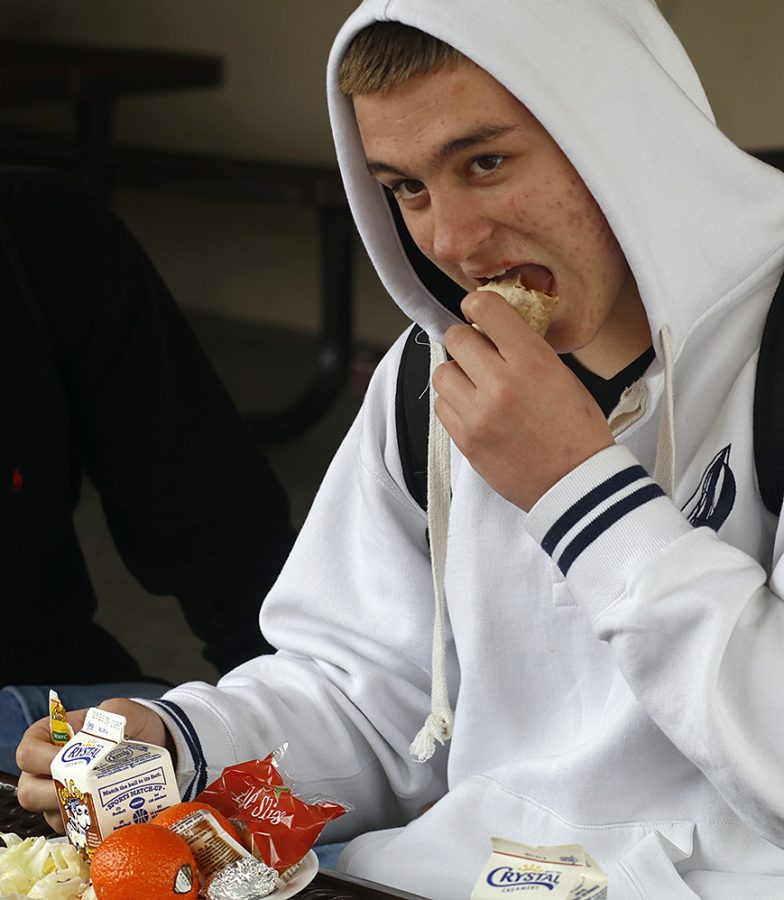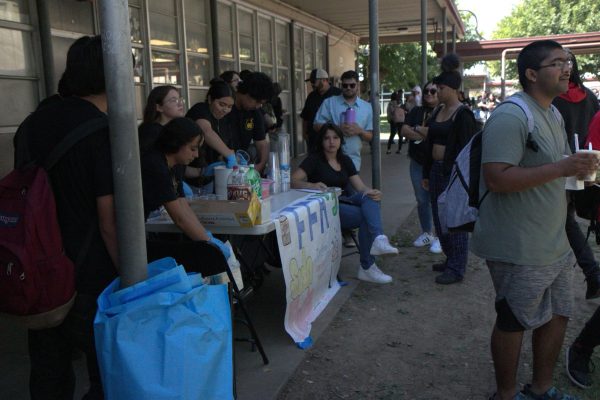WHAT’S ON YOUR PLATE?
Cafeteria food may not be loved by all, but it meets nutritional guidelines
“School food is gross,” freshman Marisa Reyes said.
“School food is disgusting,” senior Jordan Santos said.
Such comments are commonly heard in the cafeteria during lunch. To some, school food might look “unappealing,” but are students aware of the ingredients of food they’re consuming everyday?
Portioned chicken breasts with rib meat, water, isolated soy protein, chicken stock, silicon dioxide and potassium chloride are only some of the ingredients of a spicy chicken sandwich. These ingredients and others ensure every teenanger will become “healthy adults,” according to Child Services Acting Director Joni Isturis.
All ingredients used in meals are “American sourced,” meaning all products are purchased through local reputable vendors with the exception of bananas and pineapples. Ingredients bought are approved by the Food and Drug Administration.
Also the United States Department of Agriculture is involved in deciding what ingredients and products are used in meals. The USDA based the new school meal standards in 2012 on “expert recommendations from the Institute of Medicine to ensure kids are being fed healthy food while they’re at school,” Isturis said.
Food products are received from the USDA, local distributors, local farmers and the Stockton Unified School District warehouse, which serves as a “walking” freezer or refrigerator.
Meals and drinks served during lunch are strictly based on laws passed by Congress. In 2010, Healthy Hunger-Free Kids Act was passed to “help reduce America’s child obesity epidemic,” Isturis said. The purpose of this law is to minimize the health risks for American children and to ensure schools are providing balanced meals.
Despite these standards these students often wonder where school food is made. “I think school food is just warmed up or comes out of a machine,” sophomore Deston Sanchez said. In reality meals are prepared on school grounds.
Schools like Stagg, Edison, Franklin, Chavez and Pacific Law Academy are “all places where food is prepared on site,” Isturis said. Meals such as spaghetti and tacos are some plates prepared in the cafeteria.
“We want to prepare desirable items that meet the federal guidelines and are desirable to our students,” Isturis said.
Cynthia Smith, a food service assistant has worked on school grounds for two years. “We make Spanish rice, chow mein, pizza,” she said.
Some food is prepared on site but it is heated once it arrives, Isturis said.
Although many complain about the repetitive menus on campus, not many are aware of the 12 entrees at high schools. It’s inevitable for students to compare from one district to another when it comes to school food. “At my old school, school food was organic. Fruits and vegetables were grown there,” junior Emily Watterson said. She lived in Oregon her freshman and sophomore year when she enrolled in Grand District.
At the moment, SUSD is developing more menu options to “better serve students,” Isturis said. She assures feedback is always welcomed from students and parents. Her phone number and email are available on the SUSD website on Child Nutrition and Services.
Food is specifically chosen to provide a nutritious meal without cost for all students. “We want to contribute to the district goal of providing nutrition and health education and assist in the development of healthy lifelong habits,” Isturis said.










